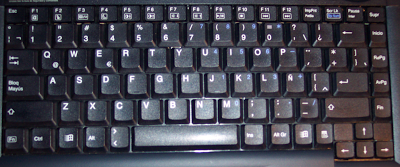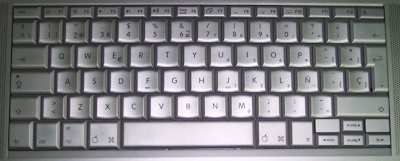New Apple keyboard
I recently went from this: To this:
To this:
The reason for the change was that the old keyboard was not comfortable any more after around two years of usage. I think that the old keyboard model (in general, not the specific one I had) developed problems after some months of intensive use: its keys lost the smooth pressure feeling they once had. (Maybe adding some kind of oil beneath them might fix this problem, though, as the keys can be easily detached from the keyboard.) Due to that, it was becoming extremely hard to type on that keyboard without mistakes. Plus I have lately got used to laptop-style keyboards: short and soft keys.
The new keyboard model feels nicely so far. It surely is basically a desktop-sized laptop keyboard, as its keys are very short and soft. But overall I like how I type on it, and my error ratio has lowered back to almost zero again :-) If you are dubious about buying this keyboard, give it a try!
March 30, 2008
·
Tags:
keyboards
Continue reading (about
1 minute)
Weird laptop keyboard
My aunt asked me if I'd do a full reinstall of the software in her laptop, a Compaq Presario 1200, because it was not working properly. This was horrible to do due to the speed of the machine, which feels incredibly slow nowadays. Plus there was a problem with the keyboard: it had never worked properly as in "some keys were not mapped to the right place". The keyboard looks like this:
After reinstalling the system and all the drivers from Compaq, I was deceived to see that the keyboard still did not work properly. How could it be that it had never worked before (not even after buying it with the preinstalled system!) and that it could not work after a clean install?
I messed with the two Spanish keyboard mappings (traditional and international sorting) and tried to remap the incorrect keys using some free tools that I found, but neither of the two fixed the problem. After a while, though, I realized that the fact that the keyboard did not have the C cedilla (ç) key would mean that it was not manufactured for Spain: that key is used in Catalan (among other languages, of course), and it has to be there for "Spain Spanish" keyboards.
And you know what? That was the correct rationale. Switching the keyboard to a south-american Spanish layout made it work as expected (tried the one from Argentine). Now, the generated characters match the letters printed in the physical keys, even though they won't be able to write a ç. (Will resolve this with some ugly hack or with an external USB keyboard.)
What I'm wondering now is... how could a very popular reseller here in Spain sell them laptop with a non-native keyboard!? That's nonsense.
For comparison with the above keyboard, this is how it should have looked:
September 1, 2007
·
Tags:
keyboards, laptops
Continue reading (about
2 minutes)

